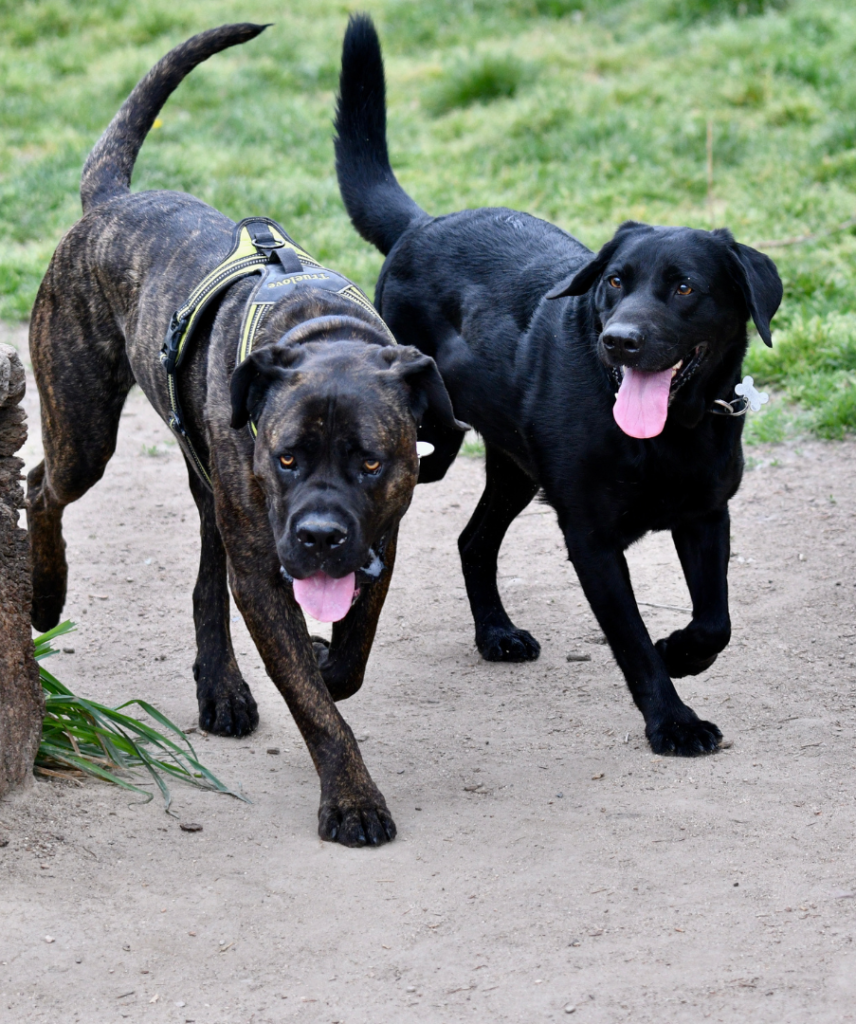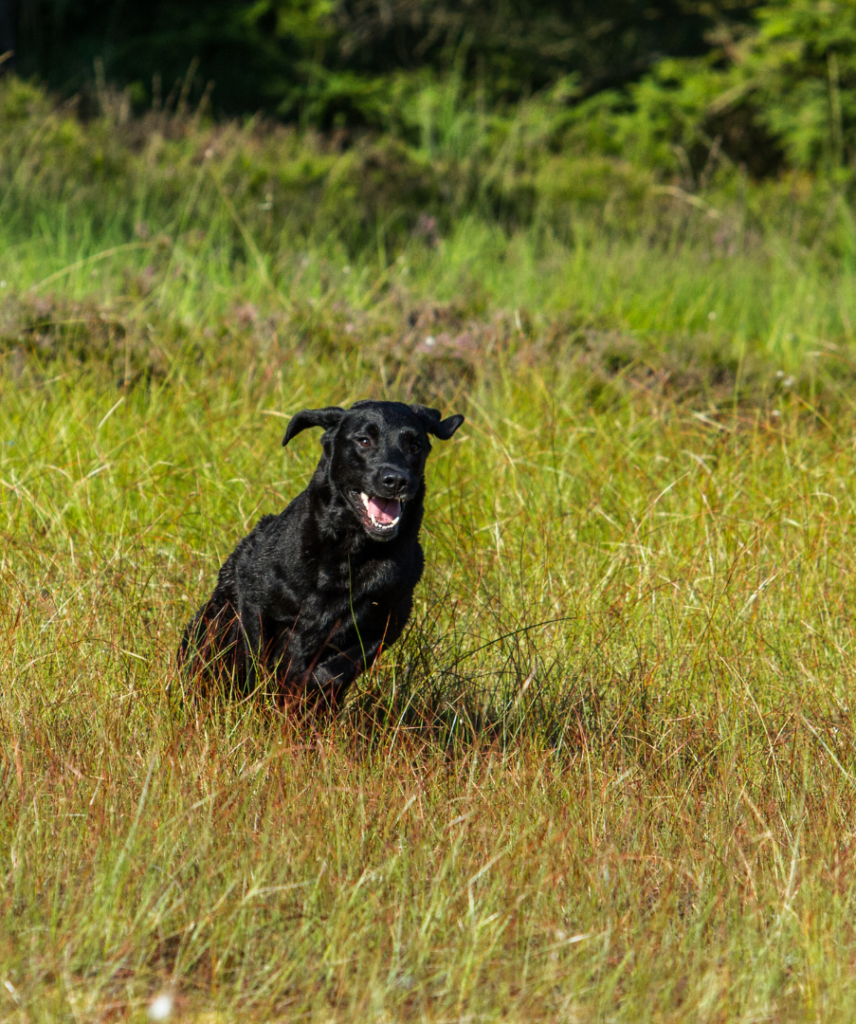The Ultimate Guide to Training: Male vs Female Dogs Unleashed
Welcome to our comprehensive guide on the intriguing world of training male and female dogs! As a dedicated dog trainer at CRT K9 in San Diego, I’ve had the privilege of working with countless dogs of all shapes, sizes, and temperaments. Through years of experience, I’ve developed a deep understanding of how gender differences can impact training outcomes. In this article, I’ll share my insights and address common misconceptions to help you successfully train your beloved canine companion.
So, buckle up and join me on this exciting journey as we unleash the secrets of training male and female dogs!

Basic Differences between Male and Female Dogs
Before diving into the nitty-gritty of training, let’s briefly explore the general differences between male and female dogs. While each dog is an individual, there are some inherent distinctions that may influence your training approach.
- Size: Male dogs are typically larger and heavier than their female counterparts.
- Strength: With their larger size comes greater strength and physical capabilities.
- Hormones: Male and female dogs have different hormone profiles that can affect behavior and temperament.
- Maturity: Females usually mature faster than males, both physically and mentally.
Understanding these basic differences will lay the groundwork for tailoring your training methods to your dog’s unique needs.
Physical Differences and The Impact on Training
Physical attributes can significantly affect training outcomes. Let’s take a closer look at the size and strength differences between male and female dogs and how they can influence your training approach.
Size
Larger dogs, often males, may require more space to exercise and play. This can be a challenge in small apartments or crowded urban areas. They may also be more prone to knocking over items or accidentally bumping into people, making it essential to focus on teaching boundaries and spatial awareness.
Strength
Males, with their typically greater strength, can be more challenging to handle, especially during walks or when they get excited. It’s crucial to train them to walk politely on a leash and respond to cues to prevent them from overpowering you.
As a dog trainer, I’ve found that acknowledging and addressing these physical differences from the outset can make your training journey smoother and more enjoyable for both you and your canine companion.
Behavioral Differences and Their Role in Training
While each dog’s personality is unique, there are some general behavioral traits associated with male and female dogs. Understanding these tendencies can help you tailor your training techniques for optimal success.
Female Dogs
Females are usually more independent and may be less inclined to engage in rough play. They can also be more sensitive to their environment and may require a gentler, more patient training approach. Female dogs can be more stubborn, making it essential to establish a strong bond and mutual respect during training.
Male Dogs
Males tend to be more territorial and may display dominance or aggression towards other dogs. They may also be more likely to engage in behaviors like marking or humping, which can create challenges when training them for polite social interactions. However, male dogs are often more playful and eager to please, which can be a boon for training.
Training Male Dogs

With their exuberant energy and eagerness to please, training male dogs can be an exciting adventure. However, they may also present unique challenges due to their size, strength, and behaviors. Here are some tips and techniques to help you effectively train your male dog:
- Establish boundaries: Make sure your male dog understands its limits and respects your personal space, as well as the space of others.
- Be consistent: Consistency is critical in reinforcing desired behaviors and discouraging unwanted ones. Stick to your training plan and enforce rules without exception.
- Positive reinforcement: Reward your male dog with treats, praise, or playtime when he demonstrates good behavior. This helps to motivate him and strengthens your bond.
- Socialization: Expose your male dog to a variety of environments, people, and other animals to help him become well-adjusted and confident.
- Patience and persistence: Some male dogs may be stubborn or slow to learn. Be patient and persistent, adjusting your training techniques as needed to keep him engaged.
Training Female Dogs
Training female dogs can be a rewarding experience as they often possess a keen intelligence and strong work ethic. However, their independence and sensitivity may require a different approach. Here are some tips for successfully training your female dog:
- Build trust: Establish a strong bond with your female dog by spending quality time together and engaging in activities she enjoys.
- Positive reinforcement: Just like with male dogs, positive reinforcement is key. Praise and reward your female dog when she exhibits desired behaviors to reinforce your training efforts.
- Gentle guidance: Female dogs may be more sensitive to harsh training methods. Use gentle, patient guidance to help them learn at their own pace.
- Mental stimulation: Keep your female dog’s mind engaged with puzzle toys, agility courses, or scent work to prevent boredom and encourage a willingness to learn.
- Socialization: Socialize your female dog early and consistently to help her become comfortable in a variety of situations and with different types of people and animals.
Spaying and Neutering: Effects on Training
Spaying and neutering can have both benefits and drawbacks in terms of training. Let’s explore how these procedures can impact training for both male and female dogs.
Drawbacks
- Possible weight gain: Altered dogs may be prone to weight gain, which can affect their energy levels and ability to participate in training activities.
- Delayed maturity: In some cases, spaying or neutering can delay a dog’s emotional and physical maturity, making training more challenging.
Benefits
- Reduced aggression: Spaying and neutering can decrease hormone-driven behaviors, such as aggression and territoriality, making training easier.
- Fewer distractions: Altered dogs may be less distracted by the opposite sex, allowing them to focus better on training.
- Prevention of health issues: Spaying and neutering can prevent certain health issues, such as mammary tumors and testicular cancer, which may indirectly improve your dog’s trainability by keeping them healthy.
Overall, spaying and neutering can have both positive and negative effects on training. Consult with your veterinarian to determine the best course of action for your dog.
Addressing Common Misconceptions
There are several myths and misconceptions surrounding the training of male and female dogs. Let’s debunk some of the most popular ones:
- “Female dogs are easier to train than males”: While female dogs may mature faster and display more independence, this does not necessarily make them easier to train. Training success largely depends on the individual dog’s temperament and the trainer’s skill and dedication.
- “Male dogs are more aggressive and difficult to handle”: While male dogs may exhibit more dominant or territorial behaviors, this does not mean they are universally aggressive or unmanageable. Proper socialization, training, and consistency can help overcome these challenges.
- “Spaying or neutering will ‘fix’ behavioral problems”: Although spaying and neutering can reduce certain hormone-driven behaviors, they are not a cure-all for behavioral issues. Consistent training and positive reinforcement are still essential for addressing undesirable behaviors.
Choosing the Right Dog for Your Lifestyle
When selecting a dog, it’s important to consider how gender may play a role in your training preferences and lifestyle. To make the best choice, take into account the following factors:
- Size and strength: Consider whether you have the space and physical ability to handle a larger, stronger dog, which may be more common in males.
- Energy levels: Male dogs often have higher energy levels, making them more suitable for active lifestyles. However, if you prefer a more laid-back companion, a female dog might be a better fit.
- Training goals: If you’re interested in participating in specific dog sports or activities, research the tendencies of male and female dogs in that specific context to inform your decision.
- Temperament preferences: Think about whether you prefer a more independent, sensitive dog (often female) or a more playful, eager-to-please companion (often male).
Ultimately, the right dog for you will depend on your individual preferences, lifestyle, and training goals. Remember that each dog is unique, and there is always variation within genders.

Frequently Asked Questions
While each dog is unique, male dogs tend to be more playful and eager to please, but may display more territorial behaviors. Female dogs are often more independent and sensitive, requiring a gentler approach to training.
Male dogs may respond well to energetic, engaging training methods due to their playfulness and desire to please. However, it’s essential to be consistent and establish boundaries to manage their strength and territorial tendencies.
There is no definitive answer, as the ease of training depends on the individual dog’s temperament and the trainer’s skill and dedication. However, female dogs may mature faster and be more independent, which can influence training outcomes.
Spaying and neutering can have both positive and negative effects on training. They may reduce aggression and distractions but can also lead to weight gain or delayed maturity in some cases.
Consider your lifestyle, training goals, and temperament preferences when choosing a male or female dog. Factors such as size, strength, energy levels, and independence can influence your decision.
To ensure successful training, follow these guidelines:
- Establish a strong bond with your dog by spending quality time together.
- Be consistent in your training methods, enforcing rules without exception.
- Use positive reinforcement to reward and motivate your dog.
- Socialize your dog with various environments, people, and animals.
- Be patient and persistent, adjusting your techniques as needed to keep your dog engaged.
Remember, every dog is an individual, and their unique personality and temperament will influence the training experience. Stay adaptable and responsive to your dog’s needs to foster a positive and productive learning environment.
Conclusion
Training male and female dogs can be a wonderfully fulfilling experience. By understanding the key differences in their physical attributes, behaviors, and unique challenges, you can tailor your training approach to ensure success. As a seasoned dog trainer, I’ve seen firsthand how a little knowledge, patience, and consistency can go a long way in forging a strong bond with your canine companion, regardless of their gender.
So go forth, fellow dog lovers, armed with the insights from this ultimate guide, and embrace the joy and rewards of training your male or female dog!
